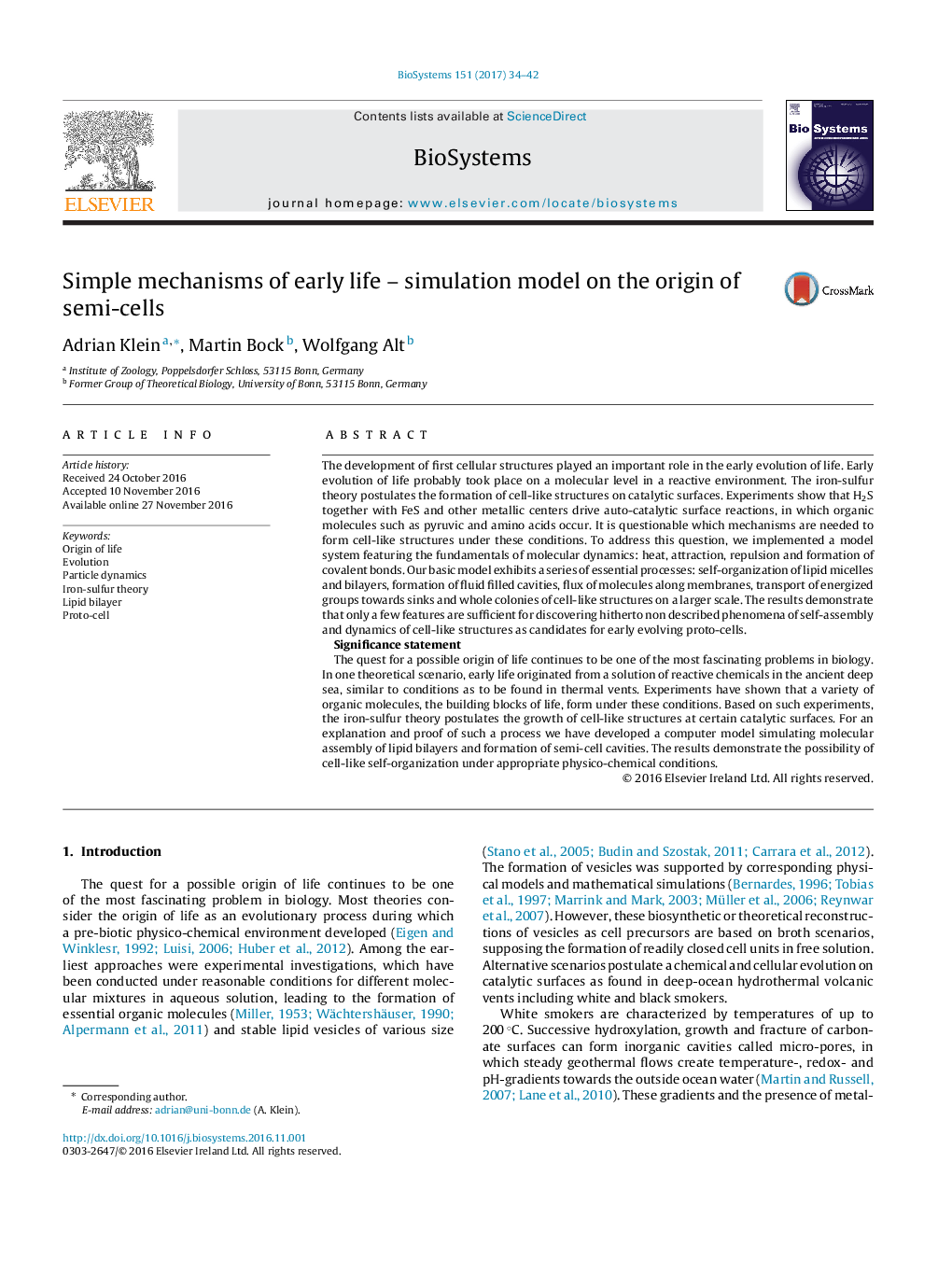| کد مقاله | کد نشریه | سال انتشار | مقاله انگلیسی | نسخه تمام متن |
|---|---|---|---|---|
| 5520658 | 1544955 | 2017 | 9 صفحه PDF | دانلود رایگان |
The development of first cellular structures played an important role in the early evolution of life. Early evolution of life probably took place on a molecular level in a reactive environment. The iron-sulfur theory postulates the formation of cell-like structures on catalytic surfaces. Experiments show that H2S together with FeS and other metallic centers drive auto-catalytic surface reactions, in which organic molecules such as pyruvic and amino acids occur. It is questionable which mechanisms are needed to form cell-like structures under these conditions. To address this question, we implemented a model system featuring the fundamentals of molecular dynamics: heat, attraction, repulsion and formation of covalent bonds. Our basic model exhibits a series of essential processes: self-organization of lipid micelles and bilayers, formation of fluid filled cavities, flux of molecules along membranes, transport of energized groups towards sinks and whole colonies of cell-like structures on a larger scale. The results demonstrate that only a few features are sufficient for discovering hitherto non described phenomena of self-assembly and dynamics of cell-like structures as candidates for early evolving proto-cells.Significance statementThe quest for a possible origin of life continues to be one of the most fascinating problems in biology. In one theoretical scenario, early life originated from a solution of reactive chemicals in the ancient deep sea, similar to conditions as to be found in thermal vents. Experiments have shown that a variety of organic molecules, the building blocks of life, form under these conditions. Based on such experiments, the iron-sulfur theory postulates the growth of cell-like structures at certain catalytic surfaces. For an explanation and proof of such a process we have developed a computer model simulating molecular assembly of lipid bilayers and formation of semi-cell cavities. The results demonstrate the possibility of cell-like self-organization under appropriate physico-chemical conditions.
Journal: Biosystems - Volume 151, January 2017, Pages 34-42
